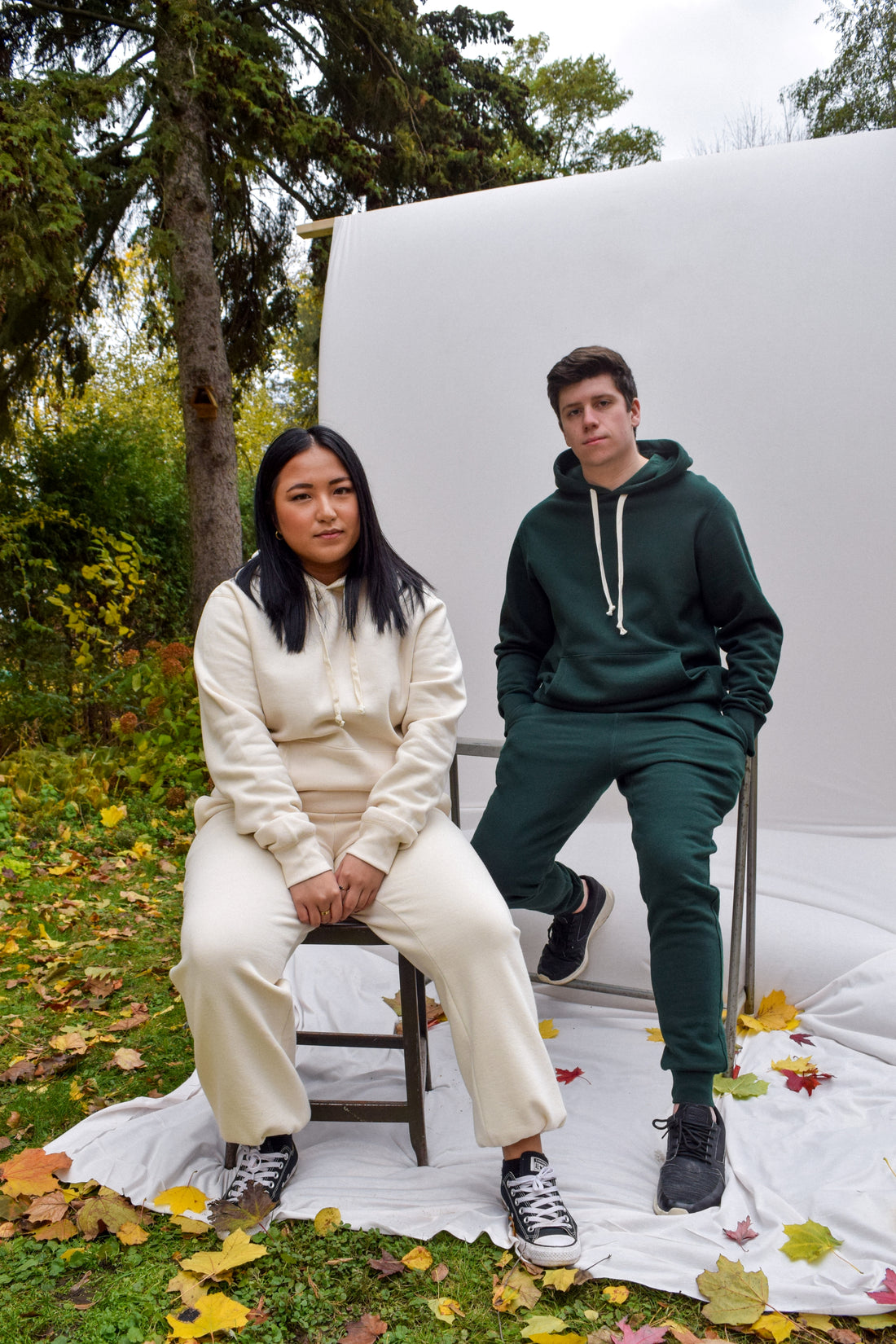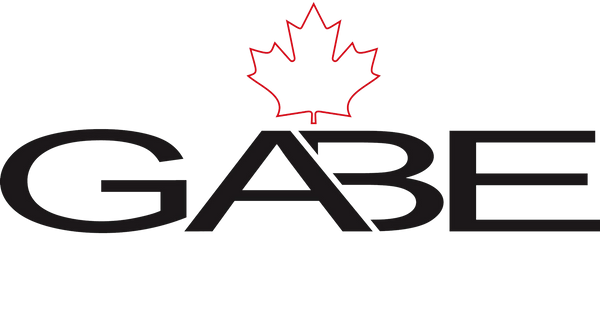
What is Blank Clothing And How Do You Customize It?
Share
In consumer fashion, trends come and go, but the allure of perfectly customized essentials remain constant.
Whether you're a budding entrepreneur eyeing the clothing industry, a creative soul eager to express your style, or a brand looking to create promotional merchandise, knowing how to work with blanks is key.
This guide will help you learn everything you need to know about blank clothing and transforming it into a unique statement that pushes your brand forward.
What is Blank Clothing?
At its most basic, blank clothing refers to apparel items that are plain and free from any form of printing, embroidery, or embellishments. These items serve as the canvas upon which individuals and businesses can express their creativity or brand messaging.
How Are Blanks Used and What Kind of Blank Apparel is Typically Available?
Blank clothing items can range from T-shirts, hoodies, hats to other types of apparel like tank tops and sweatpants. These items are typically purchased in bulk from manufacturers or wholesalers, making them a popular choice for businesses looking to customize apparel with their logos for promotional purposes. Fashion enthusiasts also enjoy the freedom that blank clothing provides, offering an unlimited realm of customization possibilities to reflect personal style or current fashion trends.
Apart from serving as a platform for creativity, blank clothing also finds its place in the fashion manufacturing industry. It often forms the basis for clothing lines, where designers can add their unique designs, prints, or patterns, and resell these customized items at a premium.
The Advantages of Blank Clothing
One of the biggest advantages of blank clothing is its versatility. Being plain and unmarked, it provides a perfect base for a myriad of customization options. Whether you want to create a single custom piece to make a statement or need hundreds of items for corporate branding, blank clothing provides the flexibility to bring your vision to life.
From a business perspective, blank clothing is cost-effective. Buying in bulk directly from manufacturers can significantly lower costs. Also, given its appeal to a broad audience – from corporate entities to individual consumers and fashion brands – the demand for blank clothing remains consistently high, making it a profitable business avenue.
Moreover, blank clothing caters to a wide range of styles and preferences. It's available in an assortment of fabrics, colors, sizes, and fits, making it easy for anyone to find what they need. This inclusivity makes it a universally appealing choice in the world of fashion.
Why Customize Blank Clothing?
Boost Brand Recognition: Personalized clothing acts as a walking billboard, advertising your brand wherever it is worn. By choosing unique designs and quality clothing, you can leave a lasting impression and increase brand recognition.
Enhance Brand Image: Custom clothing allows you to portray your brand in the exact light you want. Whether it's quality, sustainability, or trendiness, your choices in design and clothing reflect your brand image.
Stand Out From Competitors: In the crowded fashion industry, it's important to stand out. Custom clothing allows you to offer unique products that differentiate you from other brands.
Increase Profit Margins: When you buy blank clothing in bulk and customize it, you can sell it at a premium. This allows for greater profit margins than simply reselling clothing.
Flexibility and Control: Customizing gives you control over the entire process, from design to quality control. You have the flexibility to modify designs, choose different apparel types, or adapt to trends as you see fit.
Different Types of Blank Clothing
Blank clothing, versatile as it is, comes in a wide array of options. This variety not only provides different style choices but also suits a range of customization needs. From the materials used, to different cuts and styles, the types of blank clothing available in the market offer an abundance of options to start from.
Exploring the Variety in Blank Clothing
T-shirts: These are the quintessential form of blank clothing, available in an impressive array of fabrics from cotton and polyester to blends. T-shirts are perfect for screen printing, embroidery, or digital printing, making them ideal for both businesses and individuals.
Hoodies: Hoodies provide a larger canvas for creativity, thanks to their size and structure. They are perfect for bold designs or branding that needs to be clearly visible. Plus, their popularity across age groups makes them a great choice for customization.
Polo Shirts: Polo shirts add a touch of elegance to the casual world of blank clothing. They are perfect for embroidery and are a preferred choice for corporate branding or promotional clothing.
Tank Tops & Crop Tops: Perfect for the summer season or fitness-focused brands, these can be customized with unique prints, vibrant patterns, or motivational slogans.
Hats: From baseball caps to beanies, hats are a popular accessory that can be easily customized with embroidery or patches.
Sweatpants & Joggers: Increasingly popular in the age of athleisure, these comfortable clothing items can be customized with logos, quotes, or designs along the leg or hip area.
How to Customize Blank Clothing
The magic of blank clothing truly comes to life when the customization process begins. You can transform these basic items into personalized pieces of wearable art. This process ranges from simple DIY methods to more complex professional manufacturing processes. In this section, we'll explore how you can bring your ideas to life.
Best Practices for Customizing Blank Clothing
Quality Matters: When it comes to blank clothing, not all items are created equal. Always choose high-quality blank clothing that will withstand the printing process and frequent wear and washing. This not only ensures longevity but also contributes to a more professional look and feel.
Understand Your Audience: Your design should appeal to the audience you are targeting. Understand their preferences, tastes, and lifestyle to create designs that resonate with them. This will make your custom clothing more appealing and successful.
Choose the Right Customization Technique: Depending on your design complexity, color range, and the fabric of your blank clothing, some customization techniques may work better than others. Research and select the right technique—screen printing, DTG, heat press, or embroidery—for your specific needs.
Hire a Professional if Needed: If you're planning to mass-produce your designs or if your designs are complex, it might be best to hire a professional. This can ensure a higher quality finish and save you time in the long run.
Be Creative and Unique: The sky's the limit when it comes to designing. Don't be afraid to push boundaries and create something unique. This will make your clothing stand out and grab attention.
Steps for Customizing Blank Clothing
Step 1: Design Creation: Before anything else, you need to have a clear vision of your design. This can be your brand logo, a graphic, text, or a combination of these. Ensure your design resonates with your brand identity and appeals to your target audience.
Step 2: Choose Your Blank Apparel: Consider the type of clothing that would best showcase your design. T-shirts, hoodies, and caps are popular choices for many brands. Choose high-quality blank clothing that complements your design.
Step 3: Select the Customization Technique: The next step is to decide how to transfer your design onto the clothing. You could choose screen printing for large batches, Direct-to-Garment (DTG) for more detailed designs, embroidery for a classy and durable finish, or heat transfer for quick and simple jobs.
Step 4: Transfer the Design: Depending on the technique you've chosen, transfer your design onto your blank clothing. This could be a DIY process if you have the equipment and skills, or you might need to hire a professional printer.
Step 5: Quality Check: After the design is transferred, check each piece of clothing for any discrepancies or quality issues. Ensure the design is well-positioned, clear, and neat.
Essential Tools for Customizing Your Blank Clothing
Screen Printing Equipment: Screen printing is a popular method for large orders. The initial setup can be costly and complex, but it’s a good investment if you plan to print frequently.
DTG Printer: DTG printers can print full-color images directly onto your apparel. While these printers can be pricey, they’re great for detailed and colorful designs.
Embroidery Machine: If you prefer embroidery, an embroidery machine would be necessary. Prices range widely, but investing in a good machine ensures your designs are high-quality and professional.
Heat Press Machine: A heat press is a cheaper and simpler alternative, ideal for small businesses or hobbyists. It uses heat and pressure to transfer designs and can work well with different materials.
Design Software: Software like Adobe Illustrator or Photoshop can help you create and tweak your designs. There are also free alternatives like GIMP and Canva.
Before you dive in, do your research and choose the methods that best suit your brand and budget. Customizing blank clothing can be a fun and rewarding way to build your fashion brand, express your creativity, and make your mark in the fashion industry.
Final Considerations When Customizing Blank Clothing
Know Your Audience: Understand what your target audience likes and dislikes. Their preferences in terms of design, color, and clothing type should guide your customization process.
Quality is Crucial: While blank clothing can be cost-effective, don't compromise on quality. Choose good quality clothing that will hold up to washing and wear. This contributes to your brand's reputation.
Design Matters: Your design should not only be visually appealing but also meaningful. Ensure it aligns with your brand's identity and resonates with your audience.
Choose the Right Technique: The right customization technique can make or break your final product. Consider the pros and cons of each method, and choose the one that best meets your needs.
Legal Considerations: Be sure to respect copyright laws when creating your designs. Originality is key, and your brand's reputation is at stake.
With these considerations in mind, you're well-equipped to embark on your clothing customization journey. Remember, the aim is to create pieces that not only look great but also tell your brand's story.
